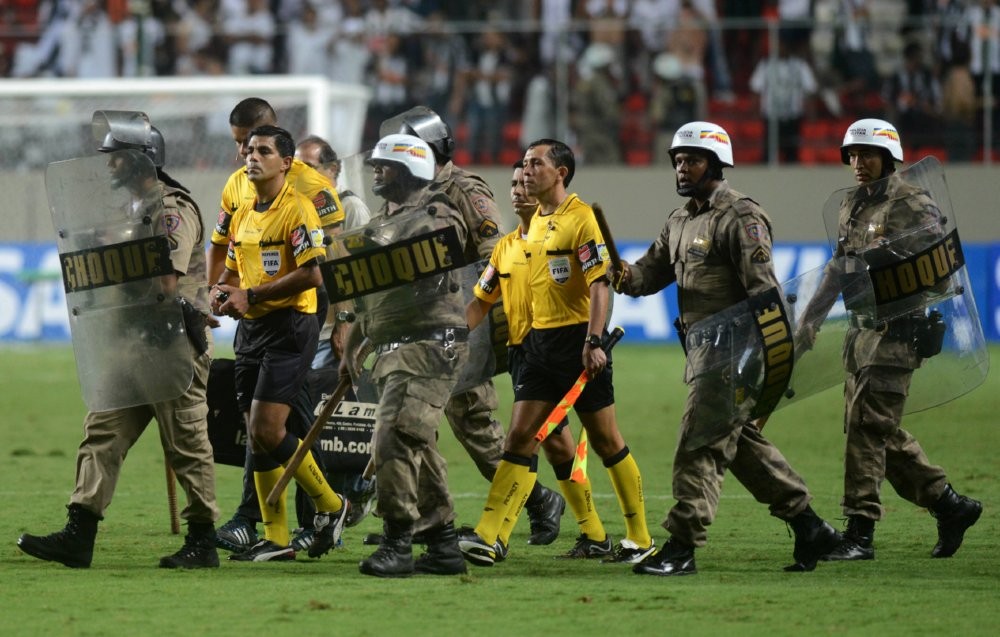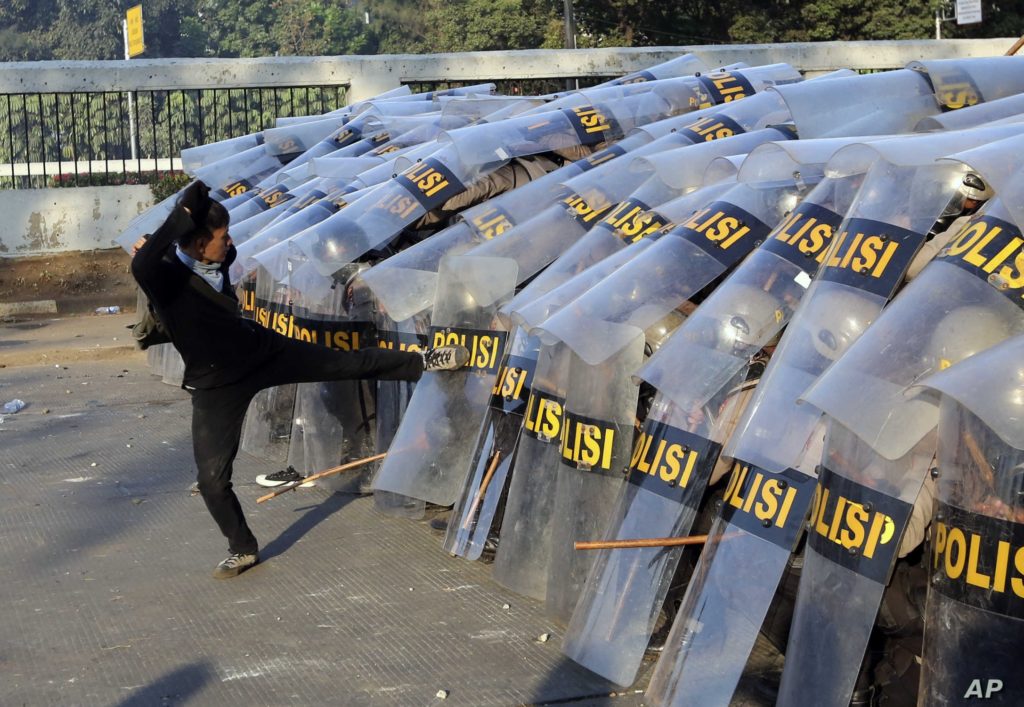Shop by Industry
Industries we support...
Products
START SHOPPING...
EXPLORE by category
Product Series
Resources
Contact
Find a Dealer
Riot shields (AKA capture shields or anti-riot shields) are polycarbonate (reinforced plastic) or metal shields used to protect against attack from knives, hurled objects, kicks, punches, etc. Police, security personnel, and correctional officers use riot shields when unrest or violent protests threaten the public and officers' safety.
While shields have been around for thousands of years, these (usually) clear protective shields became necessary and popular following violent protests in Europe in the 1950s, 1960s, and 1970s. They allow the operator to see through the shield and look in all directions without visual obstruction. This ability to scan for potential threats and navigate around potential hazards is critical in unstable situations.
There are different kinds of riot shield designs on the market. Each has its unique advantages and limitations. Therefore, it is up to the individual department or agency to select the appropriate shield(s) for the specific threats they need to protect against. In all cases, the officer must maintain control of their shield at all times.
Riot shields offer protection to the user from a variety of blunt objects and projectiles. Rioters will use anything and everything nearby as a weapon In a riot or melee situation.
Riot shields vary in thickness from 2 - 8mm, and most are made of 4 - 6mm thick polycarbonate. These shields help to protect an area, control a tense situation, and help law enforcement push back individuals when needed. Given these events' dynamic nature, the shields offer the user protection from many hurled threats, including chairs, rocks, bricks, batons, baseball bats, and crowbars. Also, they offer protection from punches, kicks, and spit.
Various other protections may be included with shields depending on the manufacturer. Some are flame retardant, protecting them against high temperatures and heat. Others have inherent protections against chemicals and biological substances such as blood, urine, and feces. Clean and disinfect shields to protect against contamination and infectious diseases. Cleaning should comply with standard operating procedures and manufacturer cleaning recommendations.
As with anything, a riot shield will sustain damage and break due to excessive or repetitive strikes. Edges of the shield are susceptible to damage caused by dropping as well. Riot shields are NOT bulletproof or bullet-resistant. In such applications, a ballistic shield is necessary. Most riot shields are also ineffective in stopping arrows.
Special event security, tactical police units, corrections officers, crisis response forces, quick reaction forces (QRF), disorder control units, and general security contracting companies all use riot shields. Outside of prison cell extractions, riot shields are almost always used for defensive purposes to protect the public in unstable situations. Their clear design gives them an unobstructed line of sight and provides immediate situation assessment.

These shields are always used in conjunction with other riot or protective gear. While tactics may vary, the shields serve to block or deflect threatening objects and people. The shield is typically carried with one hand, leaving the other hand free.
Unfortunately, some overzealous rioters often bring riot shields of their own. They use replica airsoft riot shields or make shields out of wood or scrap metal that can be used against police or other rioters if things get out of hand.
In some cases, the riot or crowd control threat is brief and known in advance. For example, rowdy soccer fans will throw bottles and other objects (including coins, batteries, and even flares) at players, referees, or security officers. These situations are mostly short-lived and don’t subject officers to a constant projectile barrage.

In large scale protests, officers may be subjected to prolonged unruly behavior and violent outbursts. These dynamic, unstable events can involve crowds violently clashing with and attacking officers as well as breaking through barriers and perimeters. In these cases, riot shields are subjected to more abuse.
In jails or correctional facilities, officers use shields for riot control situations along with cell extractions.
Riot shields help to secure a scene after an active shooter event. This involves everything from clearing a building, guiding people to specific areas, and crowd control.

It might be surprising to hear that shields are a common tool used to protect against or herd animals. They cover rabid or scared animals that may exhibit territorial or defensive behavior. Even animals like cranes and swans have sharp beaks that can cause cuts and bruises.
There are cases where zookeepers and animal control use riot shields to protect themselves when entering enclosures to feed or check on animals.
Thanks to Tracey Willmott, Mario Cugini, Phillip Spencer and Chris Sfedu for their assistance.



Enter your details below to save your shopping cart for later.